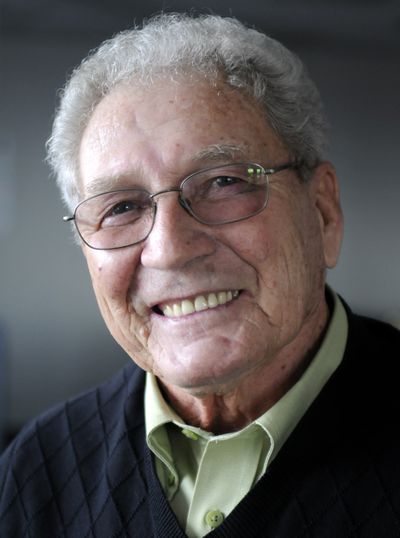McCaslin’s replacement wins easy approval
Hafner named to council seat

Surprising no one, the Spokane Valley City Council voted to appoint Positive Change architect Chuck Hafner to fill the council seat emptied by the death of Bob McCaslin.
Hafner, 79, helped orchestrate the election campaigns of four of the current council members in 2009. Mayor Tom Towey recused himself from all discussions regarding Hafner because of their relationship and because he donated $100 to Hafner’s November 2011 election campaign, which he started weeks ago. Councilman Dean Grafos, who received a $100 donation from Hafner for his re-election campaign this fall, was one of the four council members who voted to give the seat to Hafner. Councilman Bill Gothmann cast the lone dissenting vote.
Applause from the audience followed the selection. Hafner was immediately sworn in and took his seat on the dais after receiving congratulatory handshakes from all the council members.
Hafner’s first order of business was to vote on whether to allow up to 60 days for city staff and representatives of Catholic Charities to negotiate a developer’s agreement. St. John Vianney Catholic Church has been seeking to rezone a piece of property next to the church so Catholic Charities can build a low-income senior housing complex, a move that has drawn the ire of neighborhood residents. The proposed agreement would include limitations on the project to help mitigate its impact on the neighborhood.
Resident Tim Bieber said neighbors oppose the 60-day extension. “We want to resolve this issue,” he said. “We want to go forward with either a yea or a nay.”
Bieber also said that the church has been cutting down trees and he believes the work is being done without a permit. “Is it lawful, what’s happening now?”
The neighbors have concerns about the size of the proposed project, increased traffic and parking. “We have a lot of concerns, a lot of issues,” he said. “It seems like there’s a pungent odor coming from this.”
Assistant planner Karen Kendall said the extension is needed in part so a public hearing can be held. The city must provide 20 days notice in advance of any public hearing. “I don’t believe we will need the full 60 days,” she said. “There are some time frames we are stuck with.”
The council voted unanimously to allow the 60 days to negotiate the agreement and hold a public hearing before the matter comes back to the council for a vote.
In other business, the council also considered options for improving drainage on Broadway Avenue from Ella Road to Vista Road. The city will be doing some work on the road this year and would like to do drainage improvements at the same time. Public Works Director Neil Kersten said the area floods during large rain events because dry wells in the area are failing.
Kersten presented the council with two options. The first would pipe storm water into a swale, which would help filter the water. The city would need to purchase a piece of property for about $65,000 for this option, plus pay $277,617 in construction costs. “Option one environmentally is much better,” he said. “In option one the system never really fails. It has a 100 plus year lifetime.”
The city also has the option of simply repairing the dry wells, which would cost $110,260. The dry wells would likely have to be repaired again in about 20 years, Kersten said.
Councilman Arne Woodard said he visited the area during a recent rainstorm and didn’t see any problems. “Most of those (drywells) were put in 1998,” he said. “I really don’t see the flooding issues.”
The drywells were installed in 1978, Kersten said. “I’ve personally been there twice in the last three years when it was flooded,” he said. “There was a lot of water.”
Kersten said staff is having difficulty creating a functional engineering plan for the drainage swale option and asked the council if they wanted city staff to continue spending time and effort on that option.
Grafos said he favored the second, cheaper option. “Don’t waste the time on option one,” he said. “I just can’t see spending an extra $234,000.”
Hafner agreed. “I would suggest we go with option two and forget about option one,” he said.
The council unanimously agreed to move forward with the cheaper plan to repair the dry wells.